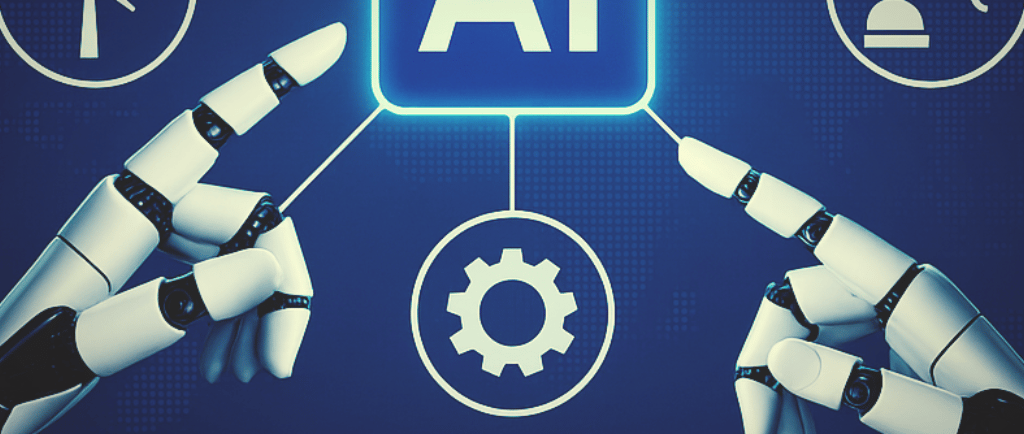The AI Revolution’s Blind Spot: Moving Beyond Silos in Manufacturing and Energy
Most leaders are looking at AI all wrong. In manufacturing and energy, we keep building smarter tools, but forget to build smarter ecosystems. Here’s what’s being missed: AI doesn’t reach full potential in silos. It thrives when shared across companies, sectors, and supply chains. 98% of companies are piloting AI. Only 26% are scaling it with real results. The difference? Collaborative, outward-looking mindsets. If you're a C-suite exec, manager, or engineer in manufacturing or energy, this isn’t just a technology revolution; it’s a relationship revolution. The ones who win will be those who connect, share, and scale together. Let’s stop thinking AI is a competitive edge only if we keep it to ourselves. The future belongs to those who build networks, not walls.
Matthew Alberts, PhD.
6/17/20254 min read


Manufacturing and energy leaders are pouring resources into AI, yet many are missing a bigger picture. Surveys show that while most companies experiment with AI, only a tiny fraction scale it to drive real impact. For example, 98% of firms have at least a pilot AI project, but only 26% have the data foundations and agility to move beyond proofs-of-concept. Likewise, even though 72% of manufacturers that deploy AI report cutting costs and boosting efficiency, only 10% of companies achieve significant ROI. This gap is not just a technical issue; it’s a mindset problem. Too often, companies treat AI as an internal “toolbox” challenge rather than an industry-wide opportunity.
The missing mindset is outward-looking and collaborative. Rather than hoard data and pilot projects in isolation, leaders must broaden their vision: AI’s real power comes when it connects across companies and sectors. In practical terms, that means building digital ecosystems and data-sharing networks. Europe’s new strategy for Industry 4.0 illustrates this: the EU is creating sector-specific “data spaces” so manufacturers can share real-time production, environmental and supply-chain data securely. Likewise, in energy, the Electric Power Research Institute (EPRI) has launched the Open Power AI Consortium, a global alliance of 30+ utilities and tech partners, to apply AI across the grid. This consortium pools insights on grid reliability, workforce safety, and forecasting, and creates a sandbox for testing AI-driven solutions in real-world conditions.
Imagine the impact when entire supply chains and power networks think collectively. Right now, only about 21% of manufacturers use AI in supply-chain management (though 60% plan to by 2026). That’s a huge missed opportunity: AI demand-forecasting alone can cut supply-chain errors by roughly 50%, slashing waste and stockouts across industries. In practice, companies are already seeing the wins. For example, Bosch used AI to optimize manufacturing at a Turkish plant, cutting water waste by 30% and energy use by 6%, improving efficiency nearly 10% in one facility. Now scale that knowledge across dozens of plants and supplier networks, and the results could be revolutionary. The same principle applies in energy: AI-guided maintenance and load-balancing can make renewables more reliable and lower carbon emissions. EPRI’s work emphasizes that AI-driven insights on a systemic level will boost grid performance and pave the way for a cleaner, more affordable energy future.
What does this require? A shift in leadership mindset. C-suite and frontline managers need to become system thinkers who look beyond internal KPIs to the wider ecosystem. Concretely, this means:
Build collaboration, not just tech. Instead of siloed “AI teams,” form cross-company alliances. Join or create industry consortia, data-sharing initiatives, and public–private partnerships. For example, U.S. manufacturers could mirror Europe’s Data Space 4.0 alliance or join utilities in Open Power AI. Share non-competitive data (e.g. anonymized usage, maintenance logs or sustainability metrics) through federated learning or shared platforms.
Break down data silos. Yes, they still exist, the mantra that has been uttered for over a decade now still rings true. Reshape your data strategy from reactive pilots to proactive design. BCG notes that industry leaders are moving “from reactively addressing use cases to proactively designing data maps” for AI. In practice, audit and standardize data across your supply chain and plants so that AI models can learn industry-wide patterns. The EU’s Manufacturing Data Space is an example of harmonizing formats so anyone can plug in their data for collective analytics.
Adopt an agile, experimental culture. Leaders must encourage risk-taking and iteration. According to BCG, energy firms must “reshape their DNA around people, processes, and culture” to adopt AI, focusing on change-management as much as on algorithms. That means training teams to experiment (even fail) fast, upskilling workers for AI tools, and flattening decision-making. Encourage engineers and managers to pilot innovations that solve not just one plant’s problem, but could help peers too.
Think big and long-term. Lead the charge on breakthrough applications. Don’t limit AI to narrow efficiency gains; use it to transform the business model or tackle global challenges. For example, apply AI in research to discover low-carbon materials, or use generative design so machines co-create new products. Rewards are huge: a majority of executives say fully integrating AI yields a significant competitive edge (over 90% according to recent surveys). However, achieving this requires vision beyond “quick wins” – it requires reimagining workflows and services.
Invest in people and partnerships. Encourage your workforce to share knowledge across companies and industries. Establish training programs and joint talent pools (similar to the new U.S.–EU AI Workforce Consortium) to facilitate the circulation of skills. Mentoring and rotation programs between manufacturing and energy firms, or with startups and universities, can spark fresh ideas. The goal is an open, learning ecosystem where innovations propagate rapidly.
The clock is ticking. The global economy is moving fast toward an AI-accelerated era; those who cling to silos risk falling behind. By contrast, leaders who embrace an outward-facing AI mindset can turbocharge entire sectors, improving productivity, resilience and sustainability at scale. The examples are emerging: every small improvement compounds when it’s shared. In your career and company, start building bridges today, join that consortium, champion data interoperability, or launch a cross-factory AI project with partners.
The call to action is urgent: The next decade will define manufacturing and energy leadership. Will you wait until competitors and regulators lock in the rules of the game, or will you lead the change? Drive your teams and peers to look outward – to think in terms of networks, ecosystems and collective innovation, not inward. Harness AI not just as a tool, but as a platform for collaboration. Together, the U.S. and Europe can leap ahead by tapping this often-overlooked opportunity. The time is now: take the first step, and inspire others to follow.
